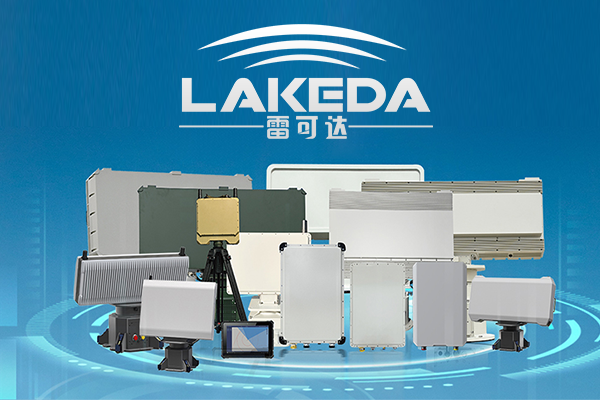What Are the Advantages of Laser Security Radar? Analysis of Industry-Leading Solutions
Traditional security systems often rely on various sensors, such as closed-circuit television (CCTV) cameras or millimeter-wave radar, but they still commonly face issues like high false alarm rates, significant installation and maintenance costs, and susceptibility to weather interference, which severely impact system reliability and operational efficiency. To address these pain points, security solution providers are actively seeking better alternative technologies to enhance the overall security level of buildings, airports, industrial sites, and other locations. Laser security radar, with its exceptional scanning modes and functionalities, has emerged as a key technology to solve these problems.
Laser security radar can generate high-resolution three-dimensional images, accurately identifying the size, direction of movement, and speed of objects within its field of view. Although millimeter-wave radar and infrared sensing also possess certain detection capabilities, they struggle to match LiDAR in terms of precision and detail in 3D imaging. Unlike conventional cameras, laser security radar can operate stably under various lighting and weather conditions, track targets in real time, and effectively suppress ambient light interference. This series of technical advantages makes it a core component of modern high-precision security systems.
It is important to note that the introduction of laser security radar does not mean completely replacing other sensors. A typical security system—such as perimeter protection for corporate campuses or critical buildings—still relies on the collaborative work of multiple types of sensors, including motion sensors, door/window intrusion detectors, target detection devices (such as LiDAR, millimeter-wave radar, and infrared thermal imagers), and video surveillance devices (such as CCTV or network cameras).
For example, in a building deploying a LiDAR security solution, laser radar is typically positioned at key points along the perimeter to achieve 360° omnidirectional target detection. The specific number and placement of sensors must be flexibly adjusted based on the overall system design to ensure efficient multi-device coordination. In practice, laser radar often serves as the first line of defense for initial target/personnel detection. Once an anomaly is identified, it can automatically trigger CCTV or other sensors to initiate detailed tracking and recording, significantly improving system response efficiency.
The data collected by the laser radar is transmitted in real time to an AI 3D sensing software platform. This platform intelligently processes point cloud data, classifies targets, tracks dynamics, and automatically determines whether to issue an alarm. It is worth mentioning that laser radar only records the distance and contour information of targets, without capturing biometrics such as faces or license plates, thereby enhancing security efficiency while safeguarding personal privacy.
Additionally, laser security radar supports automatic pan-tilt-zoom (PTZ) control based on bounding box technology, enabling continuous real-time tracking of moving targets. The detected potential threat locations can be projected in real time onto a map interface, providing security personnel with intuitive and comprehensive situational awareness. The extremely low false alarm rate significantly reduces the manpower burden, allowing security teams to handle risks more accurately and efficiently.
Laser radar can also collaborate with peripheral sensors to collectively gather environmental data and construct a complete security spatial view. This real-time data can be integrated into third-party video management systems (VMS), generating unified and highly reliable surveillance footage through multi-source information fusion, comprehensively enhancing the intelligence level and operational reliability of the security system.
Five Core Advantages of Laser Security Radar
High-Precision 3D Imaging: LiDAR can generate high-resolution three-dimensional images, accurately identifying the size, shape, and motion state of targets, significantly improving detection accuracy.
Strong Environmental Adaptability: LiDAR can operate stably under various lighting and weather conditions, overcoming the limitations of traditional cameras in low-light or harsh weather.
Real-Time Target Tracking: LiDAR has rapid response capabilities, enabling real-time tracking of multiple dynamic targets, enhancing the security system’s reaction speed.
Low False Alarm Rate: Through precise target identification and classification, LiDAR significantly reduces false alarm rates, alleviating the workload of security personnel.
Privacy Protection: LiDAR only records the contour information of targets, without involving biometrics such as faces or license plates, effectively protecting personal privacy.
Further Reading
If you are interested in laser security radar and its applications, here are some recommended readings from authoritative platforms for further reference:
- LiDAR Technology and Its Latest Applications in the Security Field - ASMAG
- Practices of LiDAR and Multi-Sensor Fusion Systems in Perimeter Protection - Institute of Automation, Chinese Academy of Sciences
- Analysis of LiDAR Technology in Intelligent Security Systems - IFSEC Global
- National Institute of Standards and Technology (NIST) Report on Sensing and Security
- International Electrotechnical Commission (IEC) Standardization Documents on LiDAR for Security Applications
